Aquarium snake fish: varieties, selection, care, reproduction
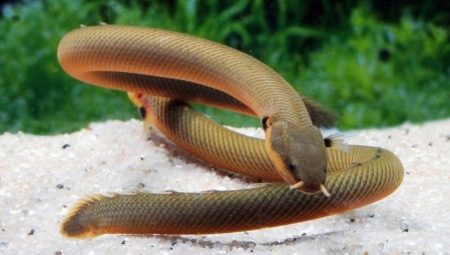
The underwater world attracts many with its mystery and diversity. In the old days, aquariums did not exist, and fish were bred for the most part in artificially created ponds. Today, anyone can buy an aquarium for themselves that suits him both in size and design. In addition, you can get exactly the fish that you like the most. Many people prefer aquarium snake fish, because they are unpretentious and have a good character.
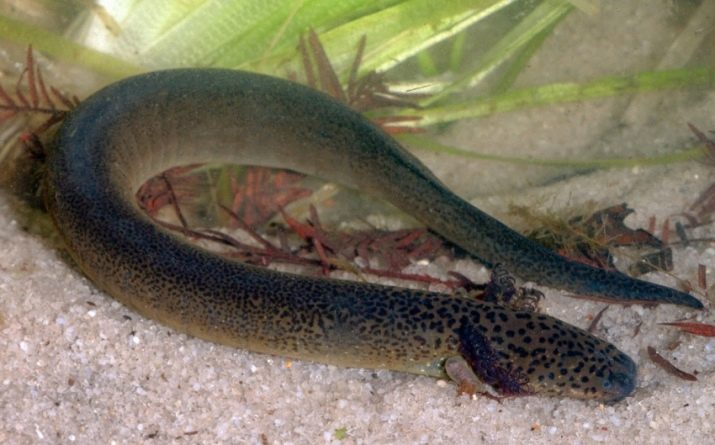
Description
Any aquarium snake has a long body (up to 35 centimeters) and can live up to 9 years at home. Her eyes are black, and the antennae with which she breathes are rather short. Most often, it is the kalamoicht that is called the snake fish. They belong to the order of multi-feathers and were born more than 40 million years ago.
In their natural environment, they live in rivers or artificial reservoirs in Africa. Most often this is shallow water, where there is a lot of green vegetation.
Kalamoicht are fish similar to snakes. Their scales strongly resemble the skin of a real reptile. The triangular head is slightly flattened, moreover, it has a large mouth and too sharp teeth, which makes such a snake fish rather unusual. The tail has 6 to 15 sharp spines.
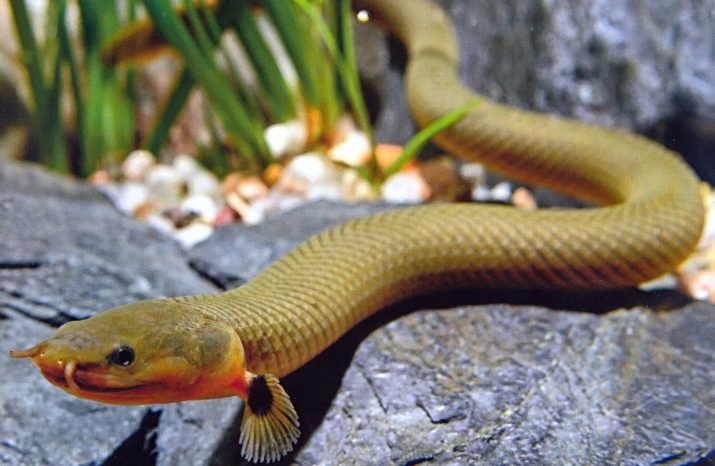
They have both lungs and gills. Thanks to this, they can stay out of the water for 8 hours. The only thing she needs is to keep the skin a little hydrated.
There are absolutely no fins on its belly, which makes this fish even more like a snake. It is painted in a light green color, which turns into a yellow tint in the belly area.The fins at the very base of the chest have black spots. Besides, kalamoicht have a completely unique feature.
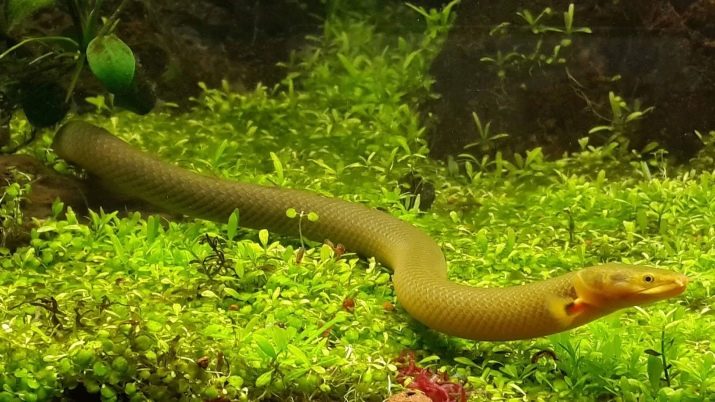
Views
Kalamoicht is not the only species of serpentine fish. Among them, there are several more varieties, for example, acanthophthalmus, loach, char and others.
Prickly char
The second name for such a fish is spiked or Cobitis taenia. Most often it lives in shallow water. It is not too big a fish - up to 10 centimeters in length. Its body is shaped a little like a ribbon with dense scales. A sharp spike is placed under each eye. In addition, there are tendrils on her lower lip. The coloration of the char is either light yellow or dark brown. It has brown spots on its sides.
To keep it in the aquarium, you will need dim lighting and cool water. The pinches also need cleanliness and a lot of oxygen.

Loach
By its appearance, the creature is very reminiscent of a snake, since it has a rather long body. Its head is also slightly elongated and slightly flattened. 10 antennae protrude from the mouth, 6 of them are located on top, and 4 - below. The eyes are very small, golden in color. The whole body is covered with small, barely noticeable scales.
The loach is painted brown-yellow on the back and yellow on the belly. On both sides there are black stripes, one of which is wide, and two are narrower.
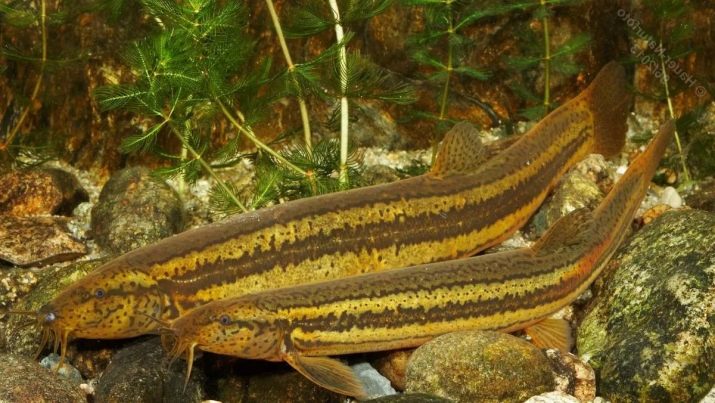
Mnogoper
These fish are relatives of the Kalamoicht. They differ only in color, as well as in a slightly higher price. Their scales have a rhomboid shape, which folds into a mosaic pattern. The fins of such fish are located at different ends of the body and slightly resemble the paws of an animal. Outwardly, they seem to be real monsters.
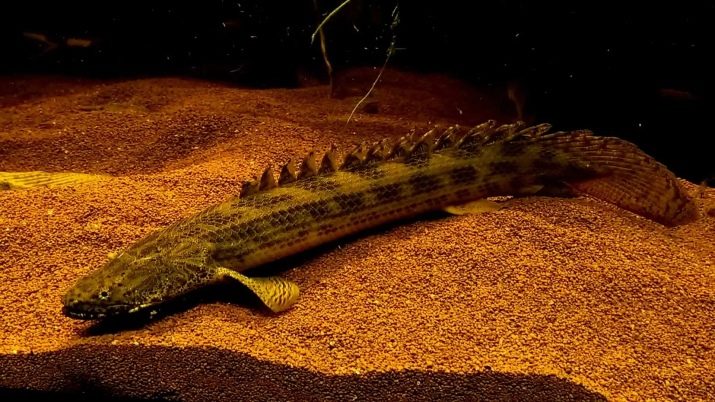
Macrogate
Most often they live in Africa or in the southwest of Asia. The body is shaped like a snake and has a length of 20 to 70 centimeters. The upper jaw of such a fish has a process that resembles a proboscis. They prefer to lead secretive lifestyle and sit out in the most secluded places, for example, in the roots of algae or at the base of driftwood.
In addition, macrogats can come out of the aquarium and dry out on the floor. Therefore, it is imperative to monitor them so that this does not happen.
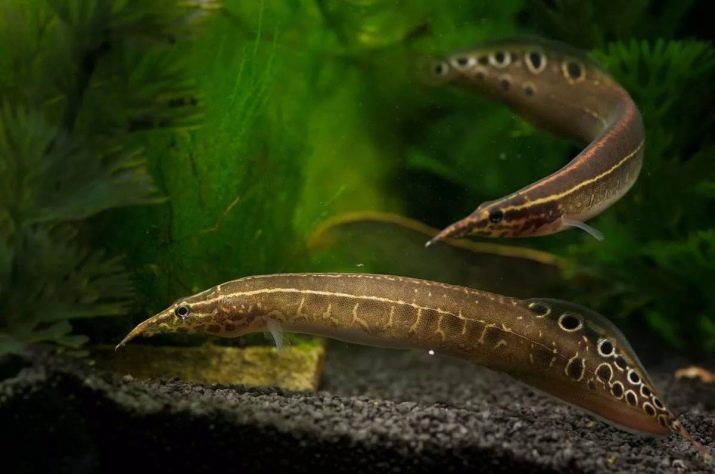
Acanthophthalmus
This type of snake fish is most often purchased for aquariums. After all, they not only have an interesting appearance, but also perform some useful functions. Indochina is considered their homeland, but in the Soviet Union they appeared only in the 70s of the twentieth century.
Their body is quite long, its size reaches 14 centimeters. They have a habit of burrowing into the ground or hiding in various shelters. They do not tolerate bright light, so they can be kept even in dark rooms.
It is not difficult to feed such fish. They will have enough food leftovers from the bottom of the aquarium.

How to choose?
Most of the snake fish that are sold in specialized zoological stores are taken from natural reservoirs. That's why for their further maintenance, adaptation to artificial conditions will be required. Sometimes it lasts up to 30 days. At the same time, many sellers often do not adhere to this rule, which is why fish may even die in new conditions.
To prevent this from happening, when buying, you need to pay attention to their skin. In the event that there are small specks on the body, this indicates the poor health of the sea creature.
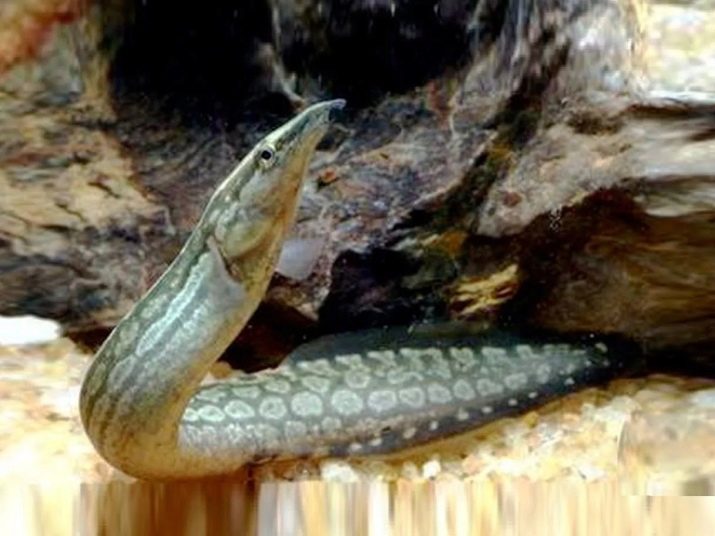
Content rules
You should not buy such fish, because it will not live long.... If all the rules were followed, then the snake-fish will be able not only to adapt to the new conditions, but also to live in the aquarium for up to ten years.
Snake fish can live in an aquarium both by themselves and in small groups. In the second case, the volume of the container must be at least 150 liters. Indeed, in artificial conditions, they do not grow more than 35 centimeters. In addition, by their nature, aquarium fish snakes are peaceful in nature and even despite their large size, they can be frightened by small fish. This is especially evident during meals.
Such marine inhabitants are most often nocturnal. But if you feed them, then they show their activity during the day.
It is imperative to strengthen the planted algae well, since they spend most of their time at the bottom of the aquarium.... Snake fish actively dig in the substrate, which can lead to damage to their root system. The substrate should be composed of fine gravel and coarse sand.
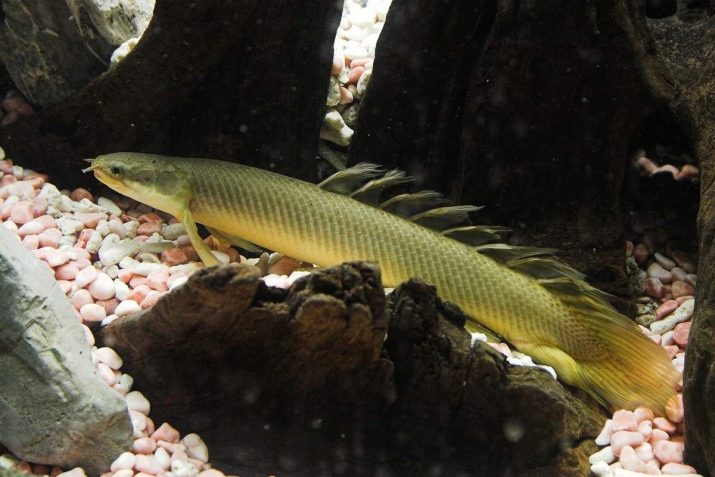
If we talk about ideal conditions for their maintenance, then the temperature in the aquarium should not exceed 25 degrees. The hardness of the water should be no higher than 15 units, and the acidity should be 7.5. In addition, you should avoid sudden changes in temperature, as this can even lead to the death of the inhabitants of the aquarium.
Many newbies use drugs such as formalin or various organic dyes. However, this is strictly prohibited. Since these fish very often escape from the aquarium, it is imperative to get a lid for it. Wherein you need to take care of the aeration systemso that the fish do not experience acid starvation.
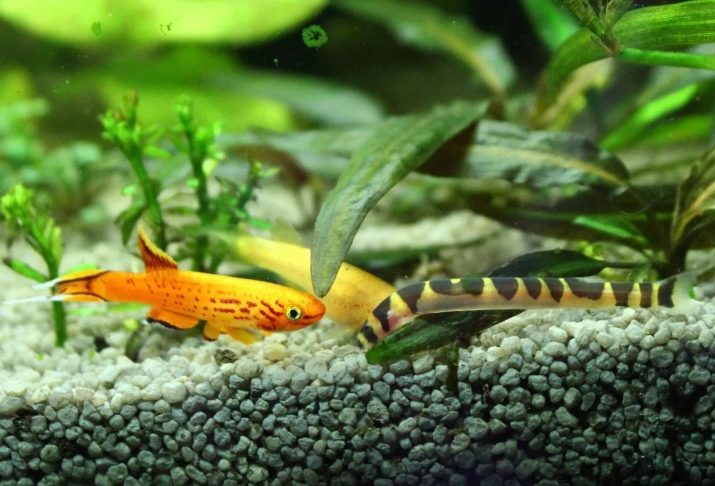
Snake fish are completely picky in terms of nutrition.
They can eat various insects, bloodworms, and any minced fish. In addition, they can also feed on crabs, crayfish or shrimps.
However, if other fish live in the aquarium besides them, then they may simply not have enough food. In this case, care must be taken that they do not starve. To do this, you just need to go for a little trick. For example, you can give food in a pipe, lowering it to the very bottom. Other fish will not get there, and "snakes" will be able to reach it without much effort.

Breeding
The offspring of snake fish are rarely given. After all, most of them are delivered to points of sale from their natural habitats. In nature, their sexual maturity occurs only at 2-3 years of age. During one spawning, they can spawn up to 100 thousand eggs. They are guarded by both parents. In addition, they flap their fins to saturate the eggs with oxygen.
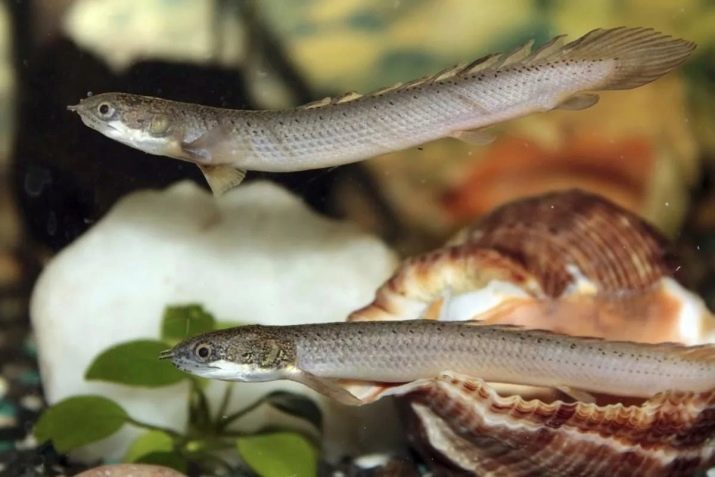
Compatibility with other fish
Fish-snakes should not be large in size, but also should not be smaller than their "neighbors". Cichlids, catfish or sonodontis are great company for them.
You also need to know that too active fish should not be attached to them. Otherwise, they will take away all the food from the snake-like ones. Conversely, small fish may end up in their stomachs. These include tadpoles, small catfish, or newts. In addition, the snake fish can eat neon as well as zebrafish. As for the kalamoicht, it is capable of eating even its own kind, only smaller in size.


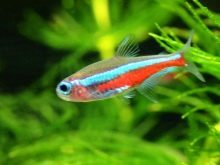
If such fish are kept in common aquariums, there may even be fights over food. To prevent this from happening the aquarium should be large, and there should be enough food for everyone. Most often, they are settled in 4-5 individuals in one container.
Those who prefer to have such unusual fish should be sure to read all the recommendations for their maintenance.
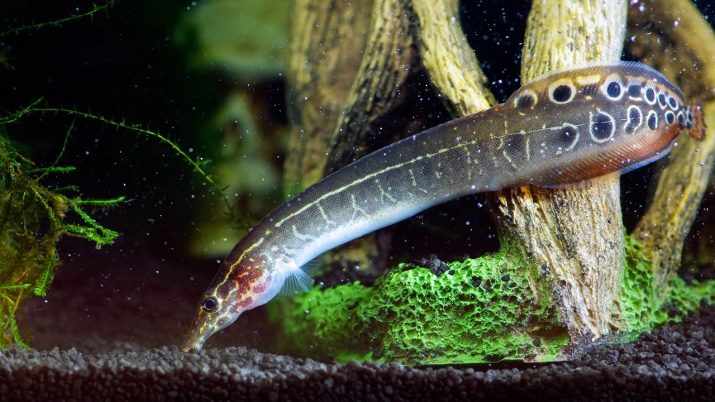
In the next video, you can watch the Kalamoicht Kalabar while feeding.








